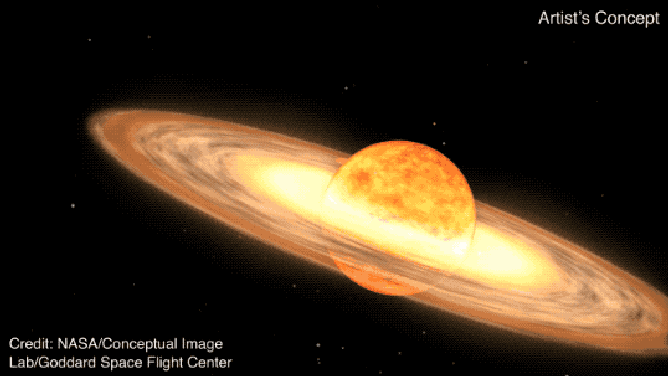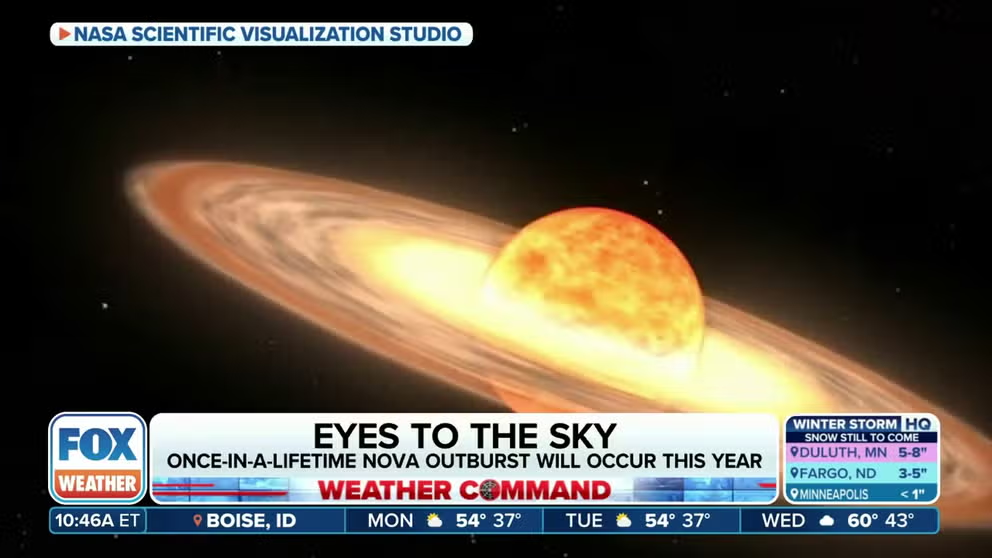Celestial explosion will briefly create new ‘star’ in night skies
A Nova explosion is caused by hydrogen falling onto the surface of a white dwarf over about 80 years: 'like a hydrogen bomb in space.' Astronomers say the explosion could happen between now and October, becoming visible to Earth for several days.
Nova outburst 3,000 light years away will make new star visible to Earth
Frederick Walter, Galactic astronomer and professor at Stony Brook University, explains what a nova outburst is and why we'll be able to see impacts from this one. Walter said the explosion will be visible for a few days to most on Earth.
A dance between two stars 3,000 light years away will culminate in a massive explosion so bright it will create the appearance of a "new" star in the night sky seen by the naked eye for several days and with binoculars for weeks.
According to NASA, the binary star system known as T Coronae Borealis, or T CrB, could soon become visible to those on Earth. The star system was last seen by people on Earth in 1946, and astronomers believe it will be visible again between now and October.
Stony Brook University Galactic astronomer Frederick Walter said the explosion known as a Nova outburst is "basically a hydrogen bomb in space."
TOTAL SOLAR ECLIPSE FORECAST SHOWS WHO HAS BEST CHANCE FOR CLEAR SKIES ON APRIL 8TH
One white dwarf star about the size of Earth and about as massive as the Sun is orbiting a red giant star, blowing off mass. Hydrogen falling onto the white dwarf accumulates over time, in this case, over about 80 years.
"You build up an Earth-mass or two of hydrogen on the surface of the star, something ignites it, and you get a Nova explosion," Walter said. "It's an uncontrolled thermonuclear runaway."

A red giant star and white dwarf orbit each other in this animation of a nova. The animation opens with the red giant on the right side of the screen, co-orbiting the white dwarf. When the red giant moves behind the white dwarf, a nova explosion on the white dwarf ignites, filling the screen with white light. After the light fades, a ball of ejected nova material is shown in pale orange. A small white spot remains after the fog of material clears, indicating that the white dwarf has survived the explosion. (Credit: NASA’s Goddard Space Flight Center)
Walter said this celestial event is different from a supernova, which is the complete detonation of a white dwarf. In this case, a Nova outburst is a surface explosion, and the white dwarf stays behind, allowing another blast in the future.
With its renewing explosive possibilities, T CrB is known as a reoccurring nova. NASA said it is only one of five in our galaxy.
Astronomers estimate the Nova explosion could happen in 2024, sometime before October. When it does, Walter said it will be about as bright as the star Polaris, also known as the North Star. Usually, the T CrB star system has a magnitude of +10, which is too dim to see, but after the explosion, it jumps to a magnitude of +2, similar to the brightness of Polaris, the North Star.
US IS NOW HOME TO LARGEST 'DARK SKY SANCTUARY' IN WORLD
According to NASA, this "new" bright star will appear in the constellation Corona Borealis or the Northern Crown in the northern sky.
"It'll be easy to see if you get out to a dark place. It will be bright for a few days," Walter said.
After a few days, the explosion should still be visible with binoculars or through a telescope.
